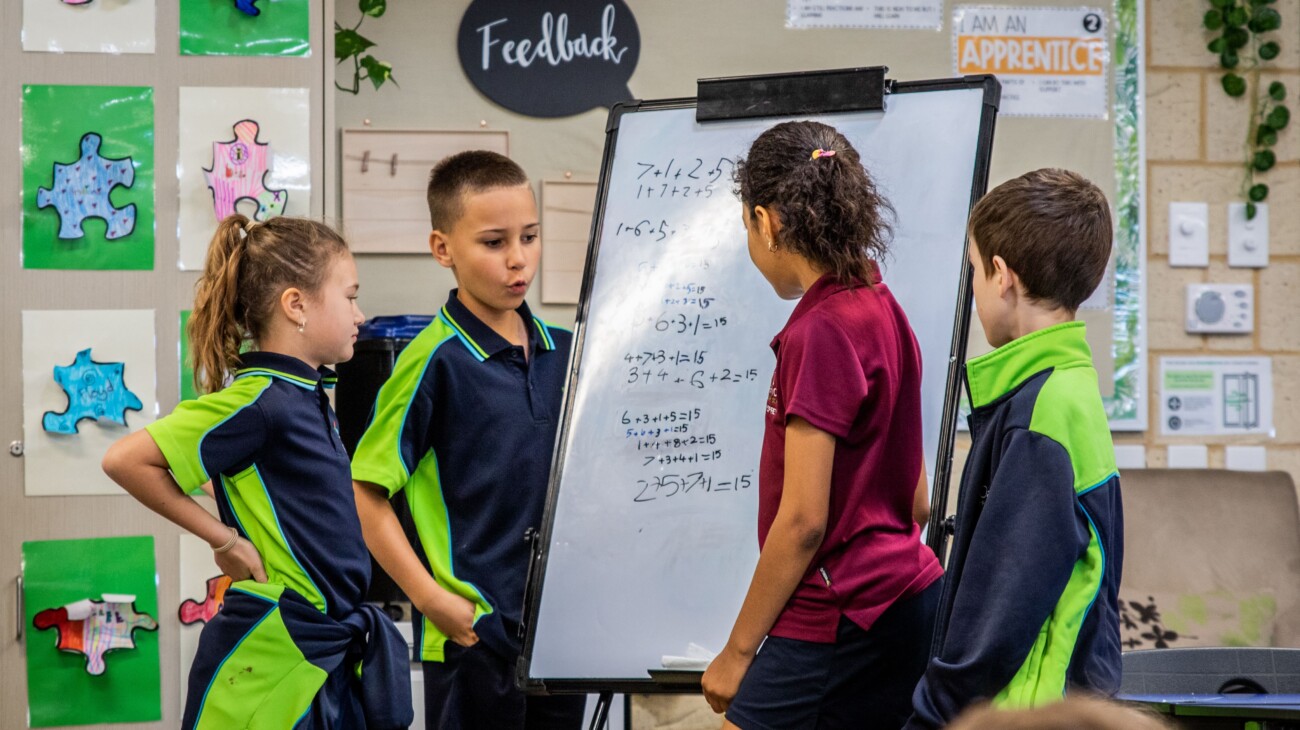Posted Friday, 19 July 2024
Space rocket debris lands at Scitech
The new exhibit featuring a piece of an Indian space rocket will be inspiring Scitech visitors to learn more about science …
My name is Renae Zarb and I engaged with the Lighthouse Maths program in 2022 and have been lucky enough to be selected as a coach for the program in 2023.

My name is Renae Zarb and I engaged with the Lighthouse Maths program in 2022 and have been lucky enough to be selected as a coach for the program in 2023.
I began my journey as a ‘plus 1’ enrolment for a colleague at my school who desperately wanted to engage with the program. I knew very little about the Lighthouse Maths approach and was sceptical as to how we could integrate the program into our explicit teaching schoolwide approach. I was clearly mistaken!
Not only did I thoroughly enjoy the program, I discovered that Powerful Problem Solving (PPS) is the perfect way to engage students with the learning and fits well within the explicit teaching model. I found myself using PPS lessons as both diagnostic and summative assessments; allowing me to gauge the effectiveness of my teaching and the learning taking place.
I taught a year 5 class who struggled to work collaboratively and thought this was going to be a struggle for them to undertake. I presented them with the following problem:
During the launch stage of the lesson we discussed vocabulary required to understand the task and I had them engage in a Think, Pair, Share. I found this a useful strategy to use as they weren’t great collaborators, so this allowed them time to organise and share their ideas before grouping; providing them with a starting point to discuss when working at the boards. The students were then grouped and sent to their boards for the explore phase.
Throughout the explore phase, I observed the students at the boards and I noted that 3 of the groups had not gained an understanding of the importance of where to place the zero. They had the following written on their board;
3.47 < 3.0
This is where having brainstormed possible student responses and planning questions to address these was integral to guiding the students thinking. My first question was to ask if the inequation was true? To which the students worked out that it was not. I then went on to ask about the zero and what it’s purpose was where they had placed it. Following this I walked away and let the students discuss their thoughts. Upon returning I had discovered that throughout the students’ discussion they had managed to work out that the zero is not required in the tenths column at the end of the problem and that it does not change the number’s value. This led the students to begin using a more systematic approach and creating a list to ensure they had all possibilities found.
During the discussion phase of this lesson, it was evident that some of the students had not attempted to find all of the possible combinations and were confused as to how they could do this. I called upon one group who had created a systematic list that eliminated or added possibilities with each number appearing as many times as possible in the same place. This was extremely powerful as I asked the group to explain how they went about this and how they knew they had all possibilities. The use of revoicing aided in ensuring that those students with misconceptions understood the importance of using a systematic approach. It was an ‘aha’ moment that excited the students to the point of them wanting to complete the task! What more can a teacher ask for?
My students soared; the struggle they faced within the problems had them questioning, reasoning and discussing mathematics in a way that was deepening their thinking and assisting them to find connections. By the end of the year my students were 6 months ahead of their peers that were not engaged with the program. I believe this speaks for itself!
With this in mind, I decided to apply for the position of Lighthouse Maths Coach and was lucky enough to be successful. We are nearing the end of Term 1 so I am only just beginning my journey. In saying that, it has been a fantastic experience thus far. I have loved gaining more insight from Shyam Drury about the program and engaging with colleagues to assist their growth in presenting PPS lessons.
I have presented lessons at schools and thoroughly enjoyed seeing the scope of the program. The approach speaks for itself. I have worked with students I have never met before and had them engaged, excited about mathematics and questioning their thinking. The discussion phase of the lesson has to be a high point for me; talk moves are where it’s at! Having students revoice information, turn and talk, revise, add on, repeat etc. is POWERFUL! These moves ensure students are engaged and assist the use of questioning to grow their thinking.
Engagement is 90% of teaching in my opinion and this program gets that for you! What more could an educator ask for?
Authors are participants of Lighthouse Maths, proudly supported by Chevron.
Upon clicking the "Book Now" or "Buy Gift Card" buttons a new window will open prompting contact information and payment details.